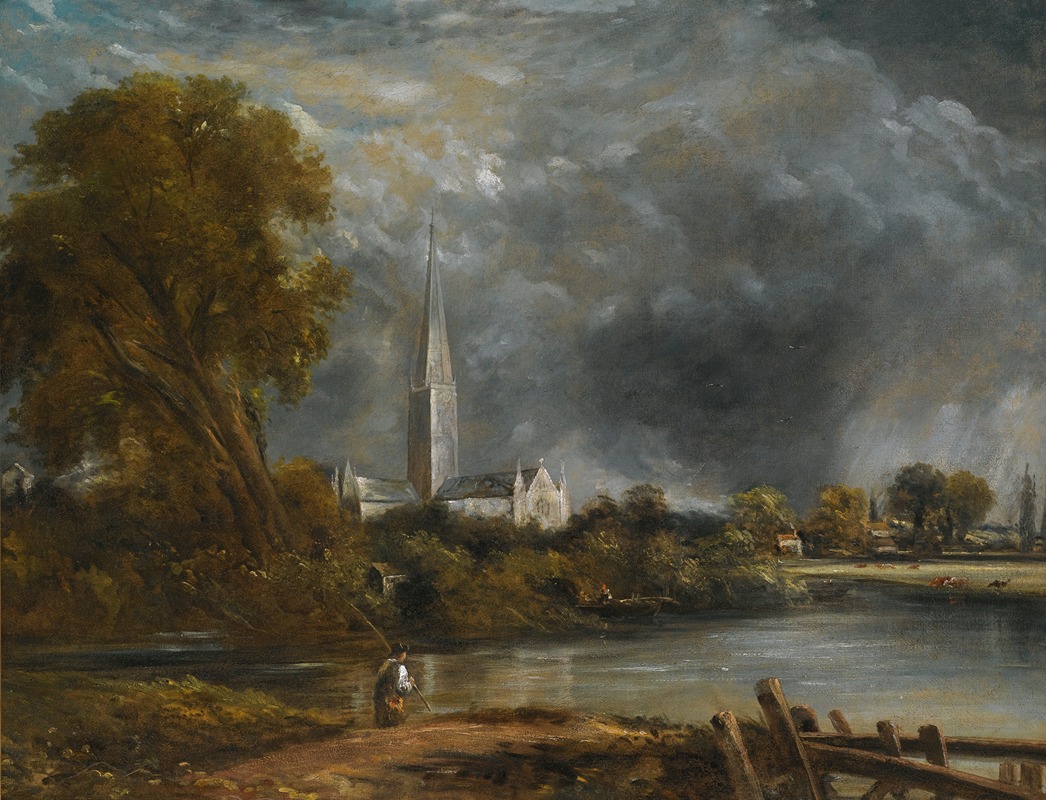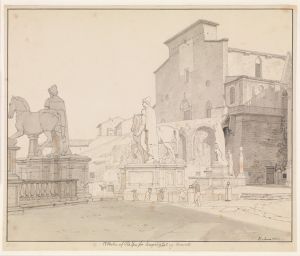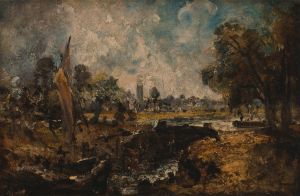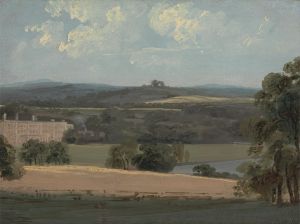
Salisbury Cathedral From The Meadows
A hand-painted replica of John Constable’s masterpiece Salisbury Cathedral From The Meadows, meticulously crafted by professional artists to capture the true essence of the original. Each piece is created with museum-quality canvas and rare mineral pigments, carefully painted by experienced artists with delicate brushstrokes and rich, layered colors to perfectly recreate the texture of the original artwork. Unlike machine-printed reproductions, this hand-painted version brings the painting to life, infused with the artist’s emotions and skill in every stroke. Whether for personal collection or home decoration, it instantly elevates the artistic atmosphere of any space.
Salisbury Cathedral from the Meadows is a celebrated oil painting by the English Romantic painter John Constable. Completed in 1831, the work is one of Constable's most significant late masterpieces and is widely regarded as a powerful expression of his artistic and emotional concerns during this period of his life.
The painting depicts Salisbury Cathedral, located in Wiltshire, England, as seen from the meadows along the River Nadder. The cathedral, a prominent example of Early English Gothic architecture, is shown under a dramatic, stormy sky, with a vivid rainbow arching across the scene. The composition includes elements of the surrounding countryside, such as trees, cattle, and a river, which are characteristic of Constable's landscape work. The painting is notable for its dynamic atmosphere, achieved through Constable's use of bold brushwork and his attention to the interplay of light and weather.
This work was created during a time of personal difficulty for Constable. His wife, Maria, had passed away in 1828, leaving him deeply grief-stricken. The painting is often interpreted as reflecting his emotional state, with the stormy sky symbolizing turmoil and the rainbow suggesting hope or divine promise. However, Constable himself did not leave explicit commentary on the symbolic meaning of the painting, and interpretations remain speculative.
"Salisbury Cathedral from the Meadows" was part of a series of works Constable created featuring Salisbury Cathedral, a subject he was drawn to through his friendship with John Fisher, the Bishop of Salisbury. Fisher and his family were significant patrons and supporters of Constable's work. The artist had previously painted the cathedral from different viewpoints, but this particular composition is considered the most dramatic and emotionally charged.
The painting was exhibited at the Royal Academy in 1831, where it received mixed reviews. While some critics appreciated its emotional intensity and technical skill, others found it overly dramatic. Despite the divided reception, the work has since come to be regarded as one of Constable's most important achievements.
In 2013, "Salisbury Cathedral from the Meadows" was acquired for the British public through a partnership involving several institutions, including Tate Britain, the National Gallery, and the Victoria and Albert Museum. It is now part of the "Constable: The Great Landscapes" collection and is displayed in rotation at various locations across the United Kingdom.

















